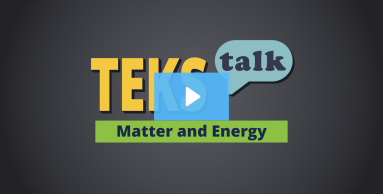
Knowledge and Skills Statement
Provide students with a set of objects and ask them to classify the objects by a physical property such as shape or color. Repeat the process using a different physical property. When classifying objects by physical properties, students may use language like round, flat, or square to describe the shape of objects. When describing texture, students might use words like soft, rough, or smooth. Grade 1 students should also be able to sort objects based on a comparison of attributes. Students might sort the objects into categories like "bigger than my hand" and "smaller than my hand".
Research
Palmeri, Amy, Amanda Cole, Sarah DeLisle, Stacey, Erickson, and Jennifer Janes. “What’s the Matter With Teaching Children About Matter?” Science and Children 46, no. 4 (2008): 20–23. http://www.jstor.org/stable/43175007.
Summary: In “What’s the Matter With Teaching Children About Matter?”, common misconceptions children may have about matter are explained, and instructional strategies to bridge that gap are provided. Children naturally use physical properties to describe matter, using words like "hard" and "thick" and describing odor. Students use their observations to classify matter.
